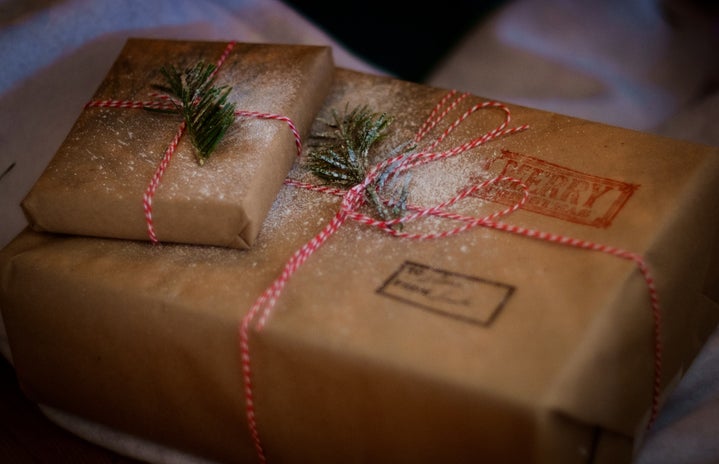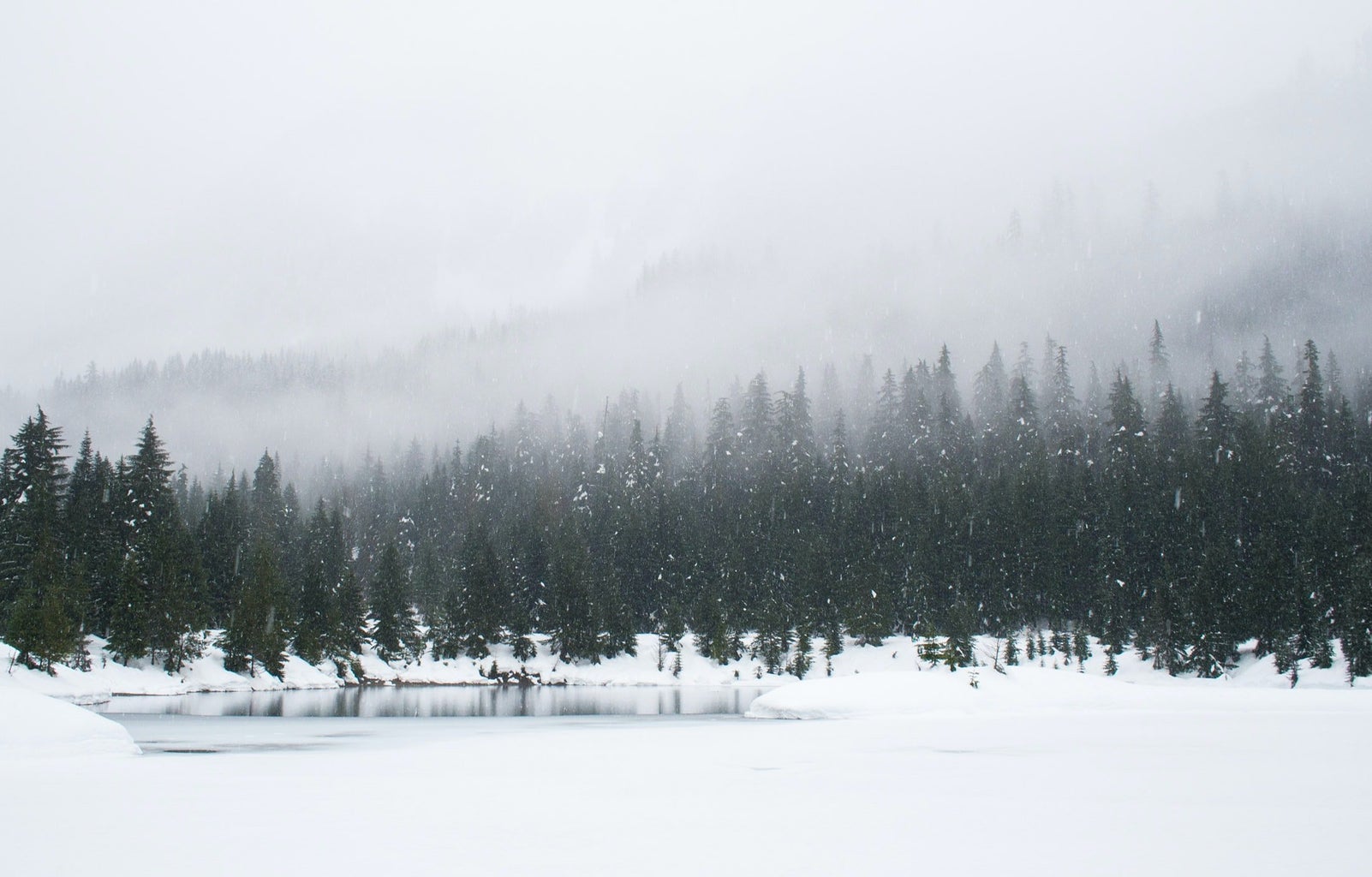The holidays are upon us, and that means we have been launched into the official gift-giving season. Whether it’s a thoughtful gift for your mom or an extra treat for your cat, it seems that each year our list of people to give presents to only grows longer. But our desire to give gifts as a way of showing our love around this time of year has slowly morphed into a holiday culture obsessed with overconsumption. We feel the need to buy, buy, buy, yet we do not really stop to consider the consequences of our consumerist tendencies on the environment. To combat this, the trend of “Creative Christmas” has popped up and grabbed our attention, encouraging people to participate in a more unique, eco-friendly holiday season.
The Ecology Center finds that in the United States, we see a 25% increase in waste between Halloween and New Year’s Eve. That’s over 1 million tons of extra waste produced per week during the holidays. And with stores taking the saying “Christmas in July” a bit too seriously by having Christmas merchandise begin to appear in stores basically in the middle of summer, this trend is only set to increase. For six months of the year, we as consumers are bombarded with information about new products and holiday sales. Companies emphasize consumption so much that it is becoming increasingly common for households to purchase entirely new holiday decorations every year and discard those from the year prior. Holiday sales are conservatively projected to reach 957.3 billion U.S. dollars this year, up from the estimated $940 billion in 2022. Though consumerism and individual spending are integral to the American economic system, the level of excessive consumption and resulting waste during the holidays has become extreme. Now it is our duty to change the status quo and give our wallets and the environment a break. Our planet struggles as landfills overflow with the high amounts of waste generated by packaging waste alone, let alone the emissions produced by delivery trucks and airplanes working double time during the holidays.
Despite the statistics, a new trend is taking the holidays by storm. “Creative Christmas” is a concept spreading across social media platforms emphasizing creation over consumption. The goals of Creative Christmas are twofold: first, to return the focus of Christmas and the holidays to spending time with loved ones and expressing our gratitude for them through considerate, creative gifts, and second, to decrease our environmental impact by promoting non-consumerist norms and practices. Participants are encouraged to spend less on new consumer products and instead focus on creating holiday decor and gifts themselves. After all, the holidays are supposed to be about bonding with family and friends, not how many Amazon packages you receive in a day.
Creative Christmas sounds great in theory, but you have to wonder what participating in this trend would actually accomplish. Well, for starters, the most obvious impact of lowering our consumption rates is that our bank accounts will be a lot happier. But on a larger scale, widespread participation in Creative Christmas and combating of overconsumption helps the planet. Think about it this way. When we buy something from Amazon, not only do energy and resources go into the generation of the actual product, but there are carbon costs to the packaging material and delivery process, as well. Without even consciously realizing, we take a significant amount of resources from our planet each time we participate in consumerism. Industrialization and mass production of material goods have desensitized us to how much it takes to produce an item as simple as a t-shirt. If we collectively deemphasize consumerism, the earth will have the opportunity to sustainably regenerate its resources, and we will decrease our overall greenhouse gas emissions due to lower demands for material items to be processed, packaged, transported, etc.
In the abstract, decreasing our purchasing rates in a culture so intent on hyper-consumption around the holidays seems like an impossible task. However, a multitude of ideas and inspiration has resulted from the Creative Christmas trend to inspire you to have a more eco-friendly and, let’s face it, enjoyable holiday experience. Here are just a few of the most popular practices:
- Dried orange garlands
-
This is one of the all-time best sustainable holiday practices. Ditch the plastic Home Depot garlands and have fun making dried orange garlands that will not only decrease your consumption and plastic use, but also make the house smell amazing. The process is simple. Slice an orange or two (other citrus fruits will do the trick, as well) into thin pieces, then spread them out on a baking sheet and allow them to bake and dry out in the oven, flipping the slices intermittently. Allow the slices to completely dry overnight, then thread them along a twine string, and voila! A sustainable, citrus-smelling holiday decoration. Click here for more detailed instructions on how to make the garlands.
- upcycled gift wrap
-
Every year, 2.3 million pounds of wrapping paper ends up in the landfill. Finding sustainable alternatives for wrapping paper is easier than you might think, you need not look further than your paper shopping bags. Carefully deconstruct your leftover Trader Joe’s bags until they become a flat sheet, and you have automatically made some recyclable wrapping paper! While there are places to purchase recyclable wrapping paper, the best option is to use what you have, whether that be deconstructed paper bags or reusing wrapping paper saved from last year.
- rent-a-tree
-
Want a Christmas tree that does not involve buying a plastic tree or chopping down a real one? Rent-A-Tree has got the solution for you! The Christmas tree rental industry is growing each year, with about a thousand people opting to rent their Christmas trees. So far, this has been a uniquely Californian practice, with company Living Christmas Co. and gardener Monica Hudson leading the charge toward more sustainable Christmas tree norms. Here’s how it works: you place an order for the size and type of tree you want, then you either go pick up the tree from a central nursery or it is delivered to your door, and the tree is now yours for the next 30 days. After the 30 days are up, the potted tree is picked up from your house and returned to the nursery where it is cared for year-round, waiting to be rented again the following holiday season.
Creative Christmas urges us to think outside the box and consider adopting more sustainable alternatives for our typical holiday practices. Participation does not need to involve complete restructuring of our holiday traditions—no need to cancel those Amazon orders from last week—but it does mean being more conscious about how much and what we spend our money on during the holidays and how those purchases impact the environment. This fun, eco-friendly trend encourages us to tap into that Hallmark movie perspective on the holidays and be more creative and intentional with our gifts and decorations. Don’t hesitate to join in on Creative Christmas and help save the planet in style!





